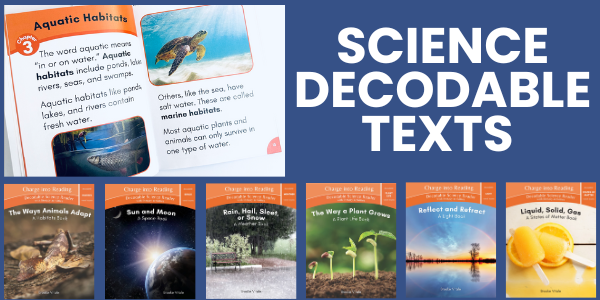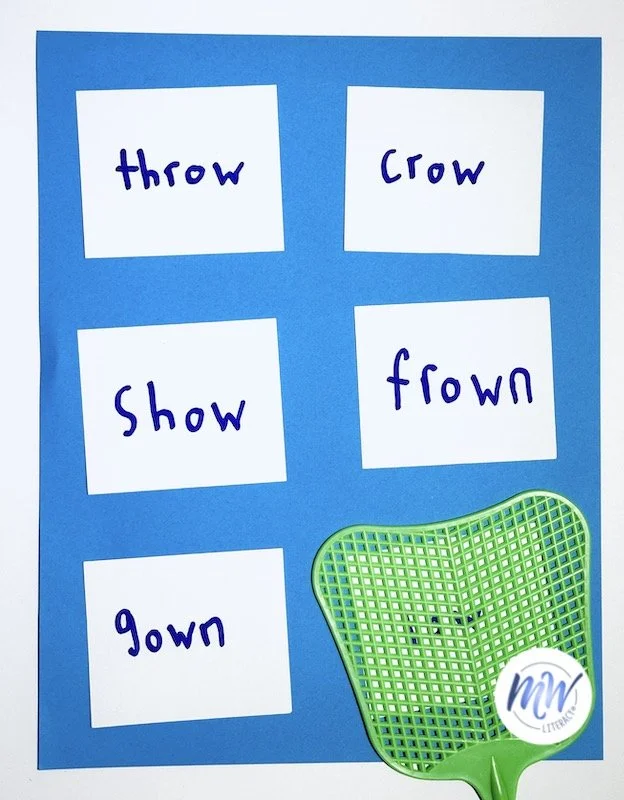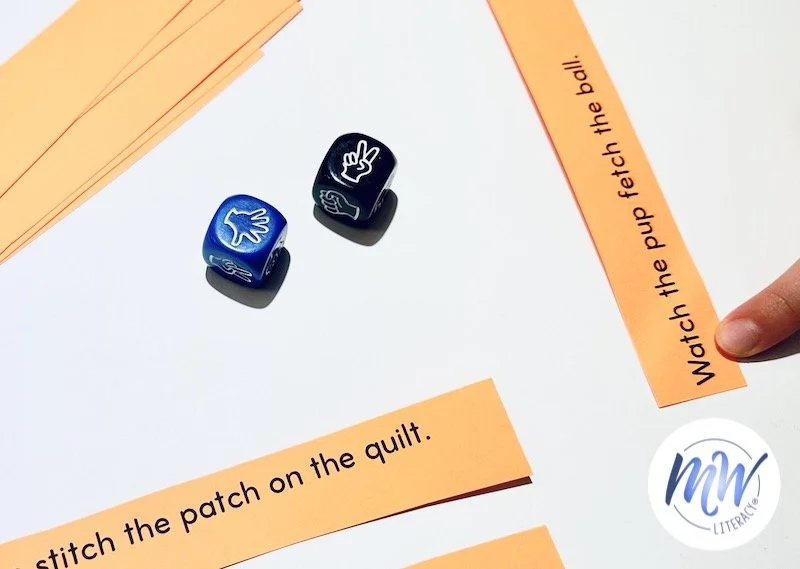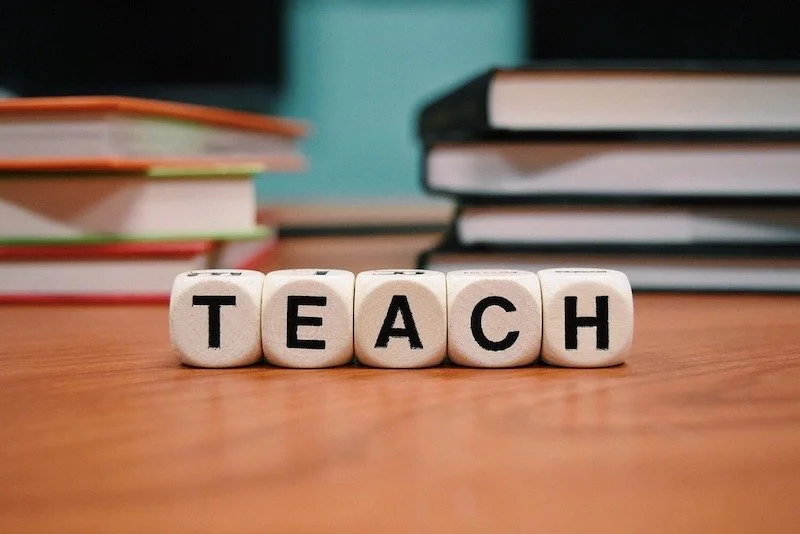5 Reasons to Teach Digital Literacy
This post is sponsored by Code Monkey: the award-winning app.
Years ago, a fourth-grade student of mine created a basic website one evening based off an idea he and his friends had had during recess that day. He had gone online, found a fool-proof DYI website builder, and got to work. Upon unveiling his accomplishment, he was very confused when the adults in his life showed concern, requiring him to shut it down immediately.
Why?
The website, while well-meaning, was not secure, it contained personal information, images of his classmates without parental consent, and questionable language. While he was praised for his creativity and technical skills, he needed direct instruction in becoming a competent and savvy digital citizen.
Kids are on devices now more than ever, and more likely than not, they are on platforms or apps that connect to the Internet making it is also more important than ever for students to have a strong background in digital literacy.
What is digital literacy? In a nutshell, digital literacy includes a range of skills that support the use of digital devices in ways that are appropriate, ethical, and productive, setting students up for future academic and career success in a wide range of fields.
Engaging students in a digital literacy curriculum with the game-based, award-winning app CodeMonkey® adds tremendous value in growing competent and savvy digital citizens while cultivating the ability to:
#1 Navigate the digital world responsibly and safely
Students who have direct instruction in digital literacy learn how to have an online presence that keeps themselves and others safe. They learn how to responsibly communicate, protect themselves from scams and online threats, identify inappropriate content, and understand potential negative consequences and outcomes of actions.
#2 Search for and access information effectively
A digital literacy education teaches students how to evaluate and verify reliable information and resources. This enables them to search content effectively and use sources accurately and appropriately.
#3 Use critical thinking and analytical skills to problem solve
For students to be able to evaluate and verify online resources and avoid problematic outcomes, they need to have critical thinking and analytical skills. This helps to solve and prevent problems.
#4 Develop their creativity and confidence
From imagination to fruition, students learn to create their own projects, build games, and much more! When tapping into students creativity, they also develop their confidence.
#5 Find future success in a wide range of fields
In our constantly evolving digital world, a digital literacy education prepares students for future academic and career success.
CodeMonkey® is the ideal platform to start with to engage students and get them on the track to becoming savvy and competent digital citizens. Use CMMWLIT25 at checkout to get 25% off today.
A digital literacy education is only one click away!
© MW LITERACY®️ALL RIGHTS RESERVED.
Let's Chat About Decodable Texts
This page contains affiliate links.
When a text is decodable, it means that it only contains words with spelling patterns that students have already learned. A text is NOT decodable if the students reading them have not received explicit and direct instruction of the included phoneme-grapheme relationships. Students who are instructed with decodable build confience and success using and building upon previously taught skills to become confidence and successful readers.
One of the more frequent and important questions asked is: There are. so mnay decodable texts out there these days. How do I choose the best ones?
First and foremore, the decodable texts you use should align with the sequence in which you are introducing spelling patterns.
The decodables I am spotlighting on this page is the Charge into Reading Decodable Readers. Full disclosure, I have the privilege of being the literacy consultant for this company, and absoutely love them, but not just becausae I’ve been a part of the creation process. Here’s why I think these these books are a must-have.
1) Decodable Words that follow a sequence
There are 10 stages in the Charge into Reading decodable series, and each book in each stage methodically introduces words relevant to the phonics sequence for that stage while building upon knowledge of spelling patterns in previous stages. Words are thoughtfully used to align with the sequence. (The sequence is available here.) Each book is also clearly labeled in the top corner for easy identification of targeted spelling pattern or sound.
2) Complete transparency
Before placing an order, you can get a full list of words in each text. This transparency allows the buyer to preview all the words in each book. Are there any words you will need to pre-teach for vocabulary or other purposes? Do you just want to know the content and word choices for the text you will introduce to your young readers? No surprises. A complete list is available prior to purchasing.
3) LIMITED HIGH FREQUENCY WORDS
We all know that most books can’t be written with JUST the words from the sequence for that specific stage, although these come very close! Ultimately, writers have to make room for some high-frequency words—these may be words that are decodable but with patterns readers haven’t yet learned (we or for), or words with irregular spelling patterns (said). There are a very limited number of such words in these texts, but again, there is also full transparency so that the buyer will know which words they are ahead of time.
4) a storyline! (AND ADDITIONAL LITERACY ACTIVITIES)
Each book was thoughtfully written with a true storyline. Each 14-page story has an added 8 pages of sound-specific literacy activities and is bound together in a just-right-size book for little hands.
5) Incidental INclusion of diverse characters
Children need to see themselves reflected in stories as main characters who are not there for the purpose of educating others about who they are or what their challenges are. This was something discussed early on in the development of these books , and we have made a point of ensuring that every stage of the series features diverse main characters whose job is not to educate others about their identities or disabilities.
6) tier 2 vocabulary
Who says decodable vocabulary has to be dull? Perhaps one of my favorite features of these books is the academic vocabulary. Some of these words are multi-meaning words which can be the basis of an engaging language activity. Let’s take one of the Stage 2 texts, The Plum Plot. How many different meanings of plot can you think of? The main events of a book, to secretly plan and carry out an action, and a parcel of land. In a Stage 9 text, The Sleigh, all three homophones pear, pair, and pare are used. As we move along each stage, we include words such as: mulch, cove, hedge, sparse, boast, waylaid, and trawler, just to name a few!
BEFORE YOU GO…
CHECK OUT THE SCIENCE DECODABLE TEXTS
Charge into Reading also published a box set of nonfiction science decodable readers. These are PhD-vetted, 48-page books decodable through Stage 7 of the fiction sequence. These are aligned to science standards, but also the perfect pick for those older readers that don’t want a babyish feeling book in their hands but still need the support of decodable text.
The Power of Brain Breaks
Brain breaks are short breaks that are structured to help students recharge, reset, and refocus.
Helping students recognize when they need a mental or physical break from what they’re doing AND providing the opportunity for one can support self-regulation and self-awareness while increasing long-term productivity.
Also, it’s important to remember that the type of brain break needed is just as important as knowing when one is needed. Some ideas for brain breaks are:
Freeze dance
Wall push ups
Jumping jacks
Rocket jumps
Animal yoga poses
Infinity walks
Directed drawing activity
Would you rather?
Line up by… (first name, middle name, birthday, street name, etc…)
Breathing / meditation
Regardless of the type of brain break, a productive and effective brain brain should:
Consider everyone’s abilities and be inclusive
Require little to no additional equiptment or materials
Be time efficient to facilitate a smooth transition to and from learning
© MW LITERACY®️ALL RIGHTS RESERVED.
3 Ways to Gamify Decoding Practice
(This post includes affiliate links. You will never incur a charge for this. You may read more about this here.)
We know that practice, practice, practice makes progress. But we also know that repetition, while helpful, can become boring. One way to achieve meaningful repetition of skills is through games. Below are three ways to easily gamify decoding practice.
SWAT THE SOUND
Materials:
List of words with either one spelling pattern that represents more than one sound, or two different patterns. In the above example, OW is used to represent /o/ (snow) and /ow/ (plow).
A fly swatter.
How to Play:
When you have your word list, write each word on an index card. For extra practice, students can write the words.
Shuffle the cards and lay them out.
Using a fly swatter like this one, the student listens carefully as the teacher says a sound, and then finds, says, and “swats” a word that has that sound.
ROCKs, PAPERS, SCISSORS, READ
Materials:
Decodable sentences. (The ones featured here are from my Decoding Practice resource.)
A set of these fun Rocks, Paper, Scissors dice.
How to Play:
Cut out the sentence strips and place them upside down in a pile.
Players roll the dice. Who ever wins the roll picks up a sentence strip and reads it fluently. The reader keeps the sentence strip.
Continue to roll. Winner picks a strip to read and then keep. The player with the most strips wins the round.
Roll & Read
Materials:
Roll & Read phonics sheets. (The ones featured here are from my Decoding Practice resource.)
Dice. Personally, I love these eraser dice because they have a quieter roll!
Highlighters.
How to Play:
Roll the die.
Choose a word in the row that matches the number on the die. Highlight the targeted spelling pattern.
© MW LITERACY®️ALL RIGHTS RESERVED.
Executive Functioning 101
It seems that executive functioning has become quite the buzz word lately, but at its core, executive functioning is vital for success both in and out of the classroom. Before we can discuss literacy success, we need to be talking about the executive function system.
Often, I hear parents tell me they never heard of this term until their child’s school mentioned it as an area of concern for which they needed support. When I first meet with these parents, this is the “executive functioning in a nutshell” overview I often provide:
Our executive function system is the air traffic control system in the prefrontal cortex of our brains that helps us to successfully navigate our everyday lives. Imagine an airport where flights are arriving and departing. It is critical for an air traffic control system to efficiently keep up with the hustle and bustle to avoid accidents and to help operations run smoothly. Executive function skills are vital for working toward academic success, building and maintaining personal relationships, and managing everyday tasks and responsibilities.
So, what are some of the executive function skills need for academic and personal success?
PERCEPTION & ATTENTION
Knowing what to attend to and how. Perception is the cognitive process that anchors us to our environment, while attention is the ability to regulate our focus to process relevant information. There are four types of attention: sustained, selective, alternating, and divided.
COGNITIVE FLEXIBILITY
Adapting to unexpected change; also, the ability to consider different perspectives and types of information.
ORGANIZATION
Having systems that are developed to keep track of belongings, dates, and assignments. Also, the ability to efficiently categorize and store information to be able to access and logically explain it.
METACOGNITION
Thinking about our own thinking. Identifying our needs, recognizing information that may be confusing, and being aware of our emotions and behaviors. Furthermore, reflecting and evaluating to make changes.
WORKING MEMORY
A type of short-term memory that allows us to hold on to information while working with it. It is often referred to as the mental sticky note. There are two main types of working memory: verbal working memory and nonverbal working memory. Excessive strain on working memory from too much “cognitive juggling” can lead to cognitive overload resulting in the inability to effectively process information. Avoiding cognitive overload is a crucial step for successful learning outcomes.
PLANNING
Thinking about the future; prioritizing and sequencing tasks; developing steps to achieve a set goal.
TASK INITIATION
Getting started on a task, even when it is unenjoyable. Task initiation is the opposite of procrastination.
INHIBITION & SELF-REGULATION
Channeling negative impulses into positive choices in order to meet a goal; managing thoughts, emotions, actions, and words.
TIME MANAGEMENT
Gauging the length of time a task will take, and using planning and organization strategies to use that time effectively and efficiently.
PERSEVERENCE
Focusing on the purpose of a goal and using strategies to work through challenges and frustrations.
© MW LITERACY®️ALL RIGHTS RESERVED.
Structured Literacy 101
You’ve heard about structured literacy. It seems to be everywhere. But what is it? It is a proven, evidence-based approach to delivering instruction. A structured literacy approach has these important components:
EXPLICIT INSTRUCTION
Explicit instruction is teaching our students directly what we want them to learn. We cannot have them guessing, nor can we hint at or superficially expose students to information that we expect they will simply absorb. This can result in misinterpretation, confusion, knowledge gaps, and whole lot of wasted time.
SYSTEMATIC & SEQUENTIAL INSTRUCTION
Systematic instruction means there is a system in place. We aren’t throwing darts to decide on which skill to focus and how. We assess, observe, evaluate, and make informed decisions about how students’ instructional needs will be met, and have a system for delivering instruction to them.
Having a system in place goes hand in hand with a sequence to implement sequential instruction. A sequence allows students to learn information in a progression that supports their learning and ability to build new knowledge based on previously taught knowledge. Students will have trouble acquiring and retaining new information if the proper building blocks are out of place.
For example, we teach open and closed syllables before we expect students to decode multisyllabic words. We won’t expect students to read texts with spelling patterns they haven’t yet been introduced to. We won’t expect students to spell multisyllabic words if they’re still struggling with identifying syllables, nor will we have students write paragraphs if they are still unable to write at the sentence level.
SCAFFOLDED INSTRUCTION
I grew up in New York City. On any given day, I’d see giant steel structures around a building. I learned at a young age that they were called scaffolds. Their purpose was to provide a safe and accessible working environment at construction sites. Scaffolds are always temporary and meant to be used only during the construction period. Eventually they disappear when their intended purpose is fulfilled.
Like the scaffolds I often saw around the city, scaffolds in education function within a similar framework. Scaffolds are TEMPORARY modifications or supports that make learning content more accessible for students. They allow learning to happen more efficiently and effectively. Not all students require scaffolded instruction, but for those who do, it can be a critical part of the instruction they receive.
Instructional scaffolding, a term created by psychologist Vygotsky, was defined as “the role of teachers and others in supporting the learner’s development and providing support structures to get to that next stage or level” (Raymond 2000).
CUMULATIVE INSTRUCTION
The last component of the structured model! Instruction doesn’t just end when the information and knowledge is delivered. Cumulative instruction reinforces that practice MUST be incorporated through committed review. In cumulative instruction, new instruction is built upon previous knowledge.
© MW LITERACY®️ALL RIGHTS RESERVED.
Explore literacy and executive function related topics. More coming soon. Stay tuned…



























